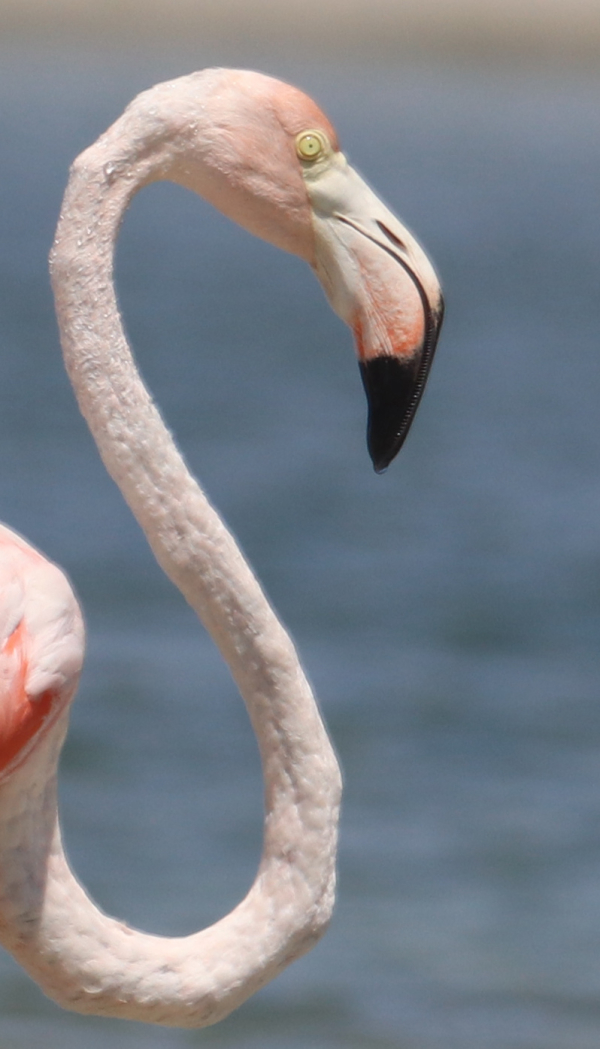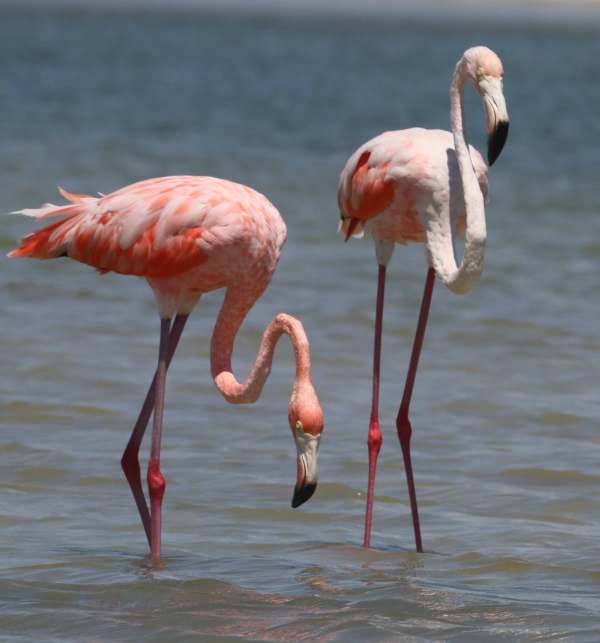
A close-up look at one of the many American Flamingos that are now being found along Florida beaches and other wetlands (photos by Jim Konrad).

Photographed at Fort De Soto Park on the edge of St. Petersburg, Florida, it’s immediately obvious how long an American Flamingo’s neck and legs are compared to egrets or herons.
|
While we applaud the aid being generated to help Floridians and others in states impacted by Hurricane Idalia last week (August 29), in the aftermath of the storm, birders across Florida were on the lookout for windblown birds that included Bridled Terns, Magnificent Frigatebirds, and Sooty Terns from the Caribbean. But no one expected the resulting influx of American Flamingos that touched down as far north as St. Marks National Wildlife Refuge to as far south as Marathon Key. Up to 16 flamingos are being seen in a single flock, with many smaller groups blown north from Cuba and the Yucatan Peninsula of Mexico, where the tropical storm originated before becoming a hurricane.
American Flamingos have been reported mostly along coastal areas, along beaches and in other natural areas including sites near the Sanibel Causeway, Treasure Island, Tarpon Springs, Honeymoon Island State Park, Clearwater, Fort De Soto Park, Punta Gorda, Charlotte Harbor, Bunche Beach, Siesta Key, Tigertail Beach, Estero Bay, Lake Pithlachoco, St. Marks National Wildlife Refuge, Everglades National Park, Long Key, Marathon Key, and more. It’s interesting to note that 1 of the 8 flamingos observed at Marathon Key had a yellow band on one leg that indicated the flamingo was banded at Rio Lagartos on the north coast of Mexico’s Yucatan Peninsula.
It’s not the first time this has happened, but it’s definitely the first time so many flamingos have been involved in such a storm-aided displacement. We can expect some flamingos will move from location to location, and in the past some flamingos that arrived via tropical storms and hurricanes remained in Florida. A prime example is the American Flamingo that arrived after Hurricane Michael in 2018 and has been present on and off at St. Marks National Wildlife Refuge ever since. Now that storied flamingo has the company of 6 more American Flamingos compliments of hurricane winds, to the delight of local birders.
Flamingos in States to the North and West
Birders throughout the states in the Southeast need to be on alert too. Along the storm’s Atlantic Coast route, 2 American Flamingos were documented at Bull Island, South Carolina, and 11 flamingos have been reported at Pea Island National Wildlife Refuge in North Carolina. Even more surprising have been the 2 American Flamingos documented at Caesars Creek State Park in Ohio, with 5 others sighted near Collinwood, Tennessee, 3 more near Moundsville, Alabama, and 5 flamingos at Bolivar Flats in Texas. With flamingos sighted as far north as Ohio, surely Ontario birders must be on alert for flamingos in Canada (2 weeks ago that notion would have been laughable). We will be hearing more about flamingo sightings for some time to come among rare bird sightings, possibly for months and years to come.